Abstract
The bacterial communities associated with the development of necroses in injured agria cactus tissue were examined in the field by using both human-induced injuries and cactus tissue inoculated with cactophilic bacteria. Whole-cell bacterial fatty acids were used to determine when and where each of 23 detected species occurred. This information was then used to describe successional patterns of bacterial colonization. Although the number of bacterial species in human-induced injuries reached a maximum on day 16, the Shannon-Weaver diversity index increased to a plateau, which reflects a stable bacterial community. The potential of the bacterial community to macerate the injured cactus tissue was also examined, and the results indicate that the bacteria initially colonizing the newly injured cactus tissue were more likely to contain pectinolytic, proteolytic, and lipolytic enzymes than were the bacteria entering the injuries once tissue maceration had already begun. The cactophilic fruit fly Drosophila mojavensis has been previously shown to carry bacteria to newly injured cactus tissue. In these studies, exclusion of these insects did not significantly affect bacterial succession or community structure. This supports our contention that bacteria colonize injured tissue primarily by passive transport, e.g., on wind-blown particles.
Full text
PDF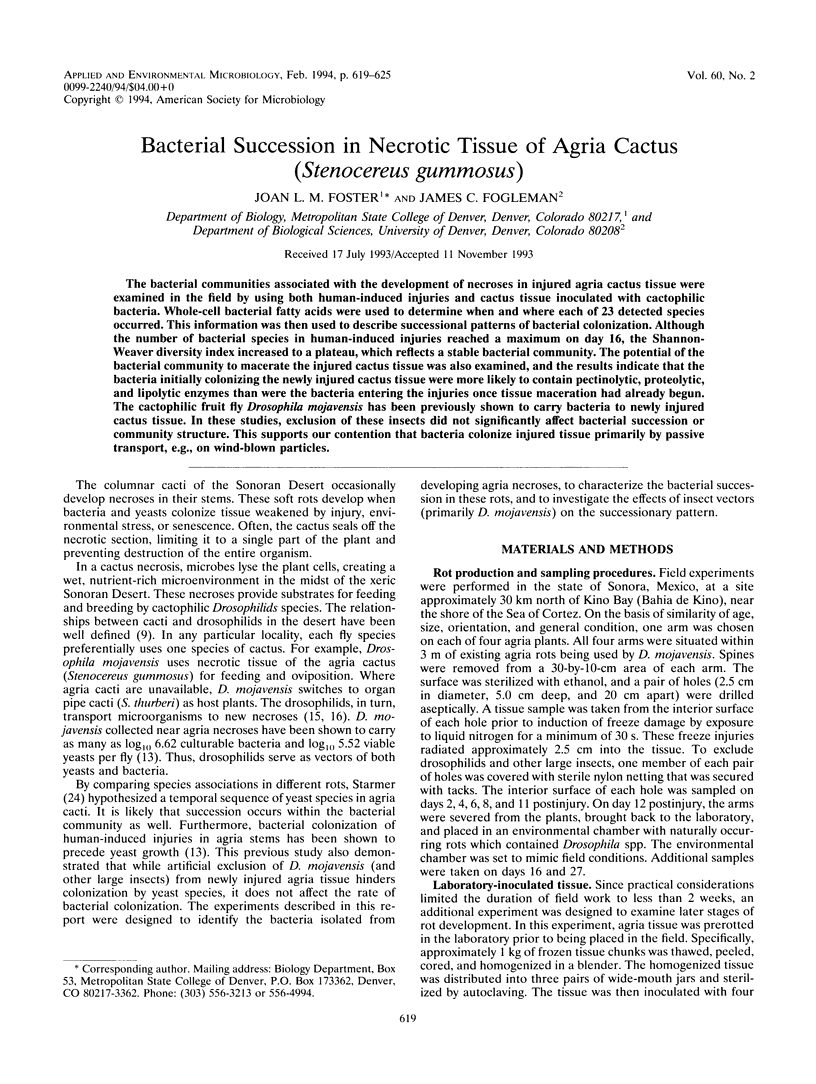
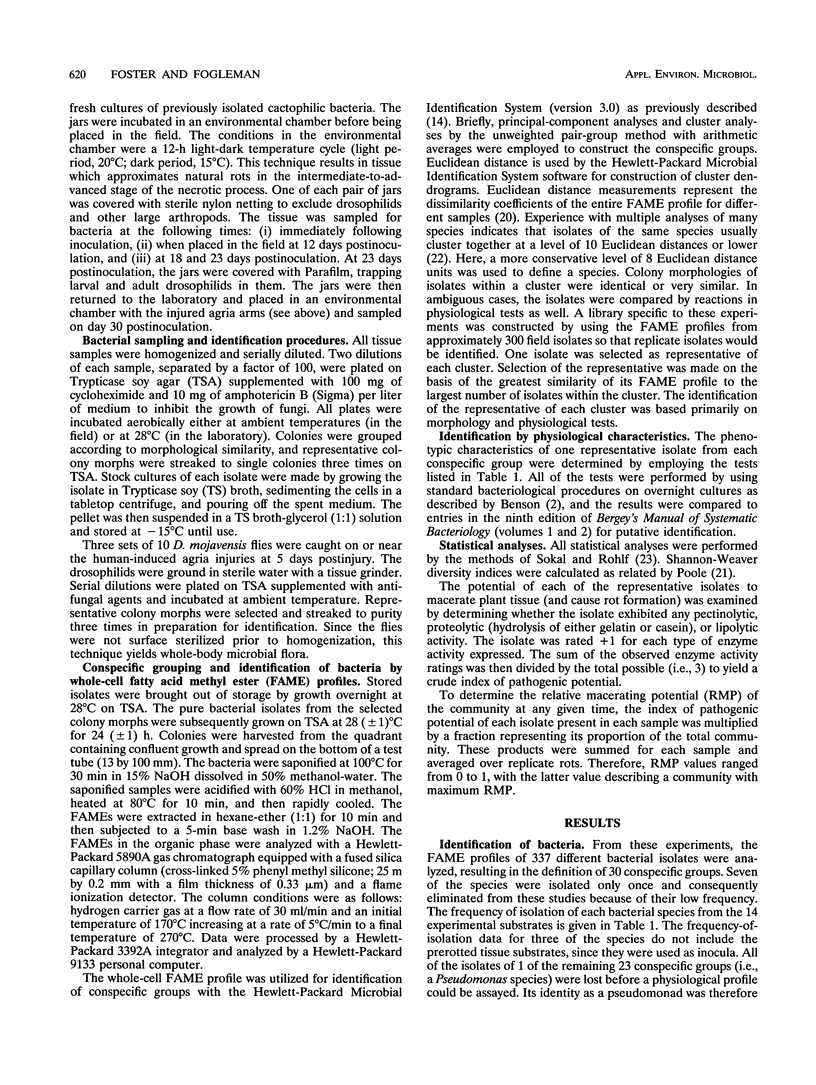
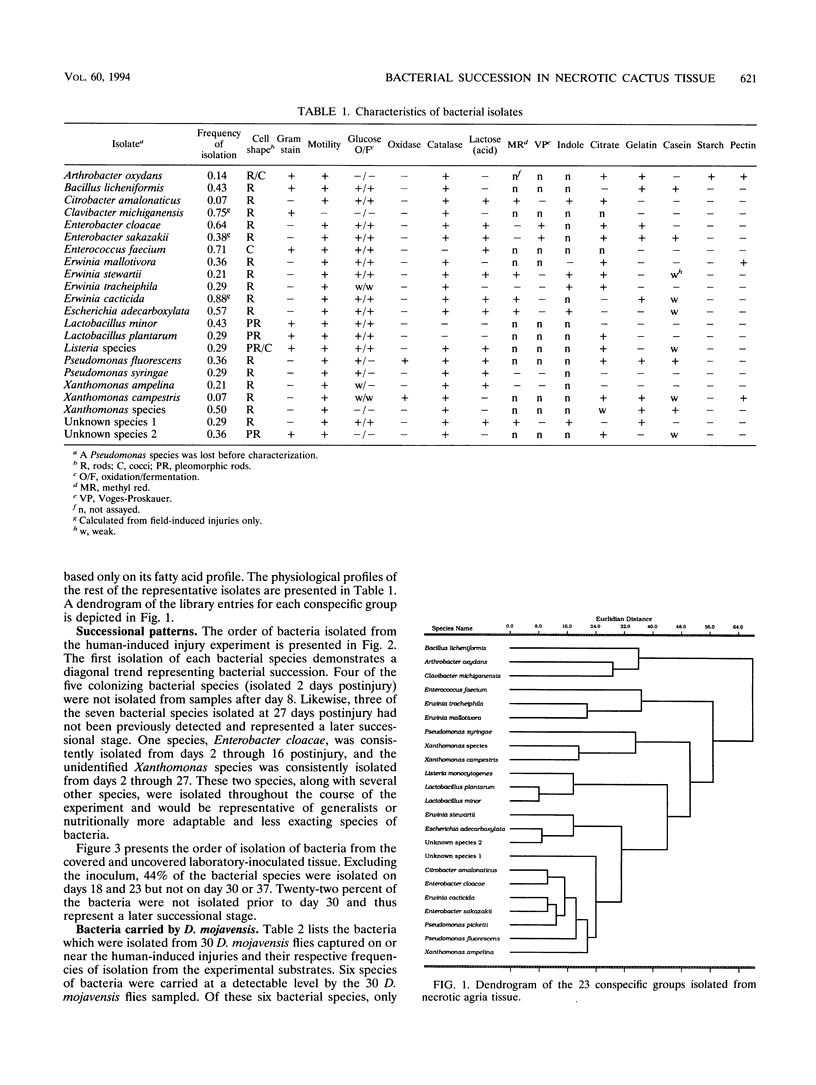
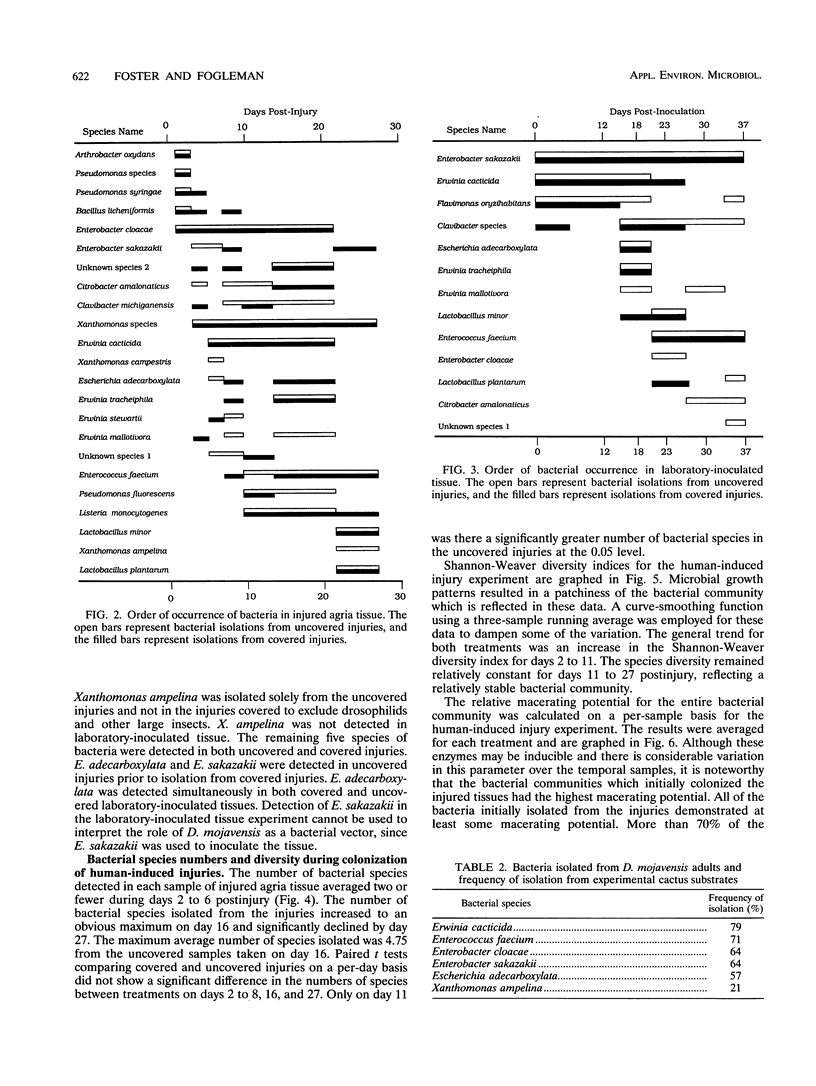
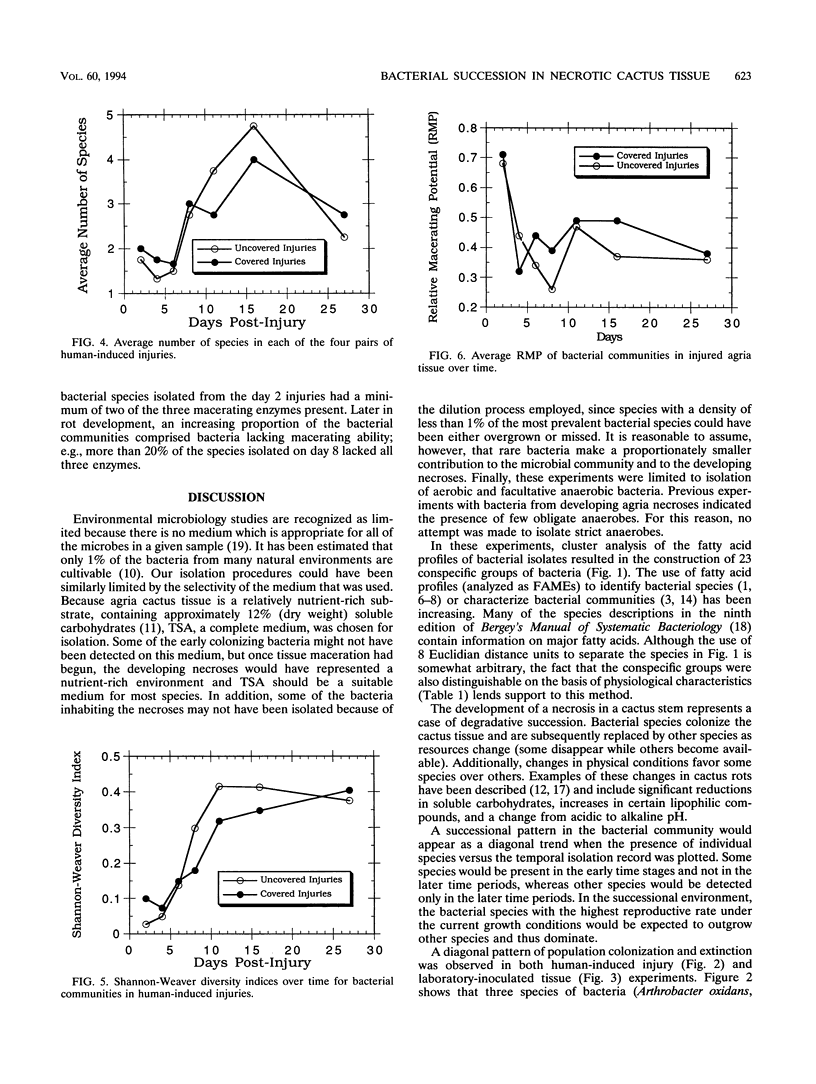
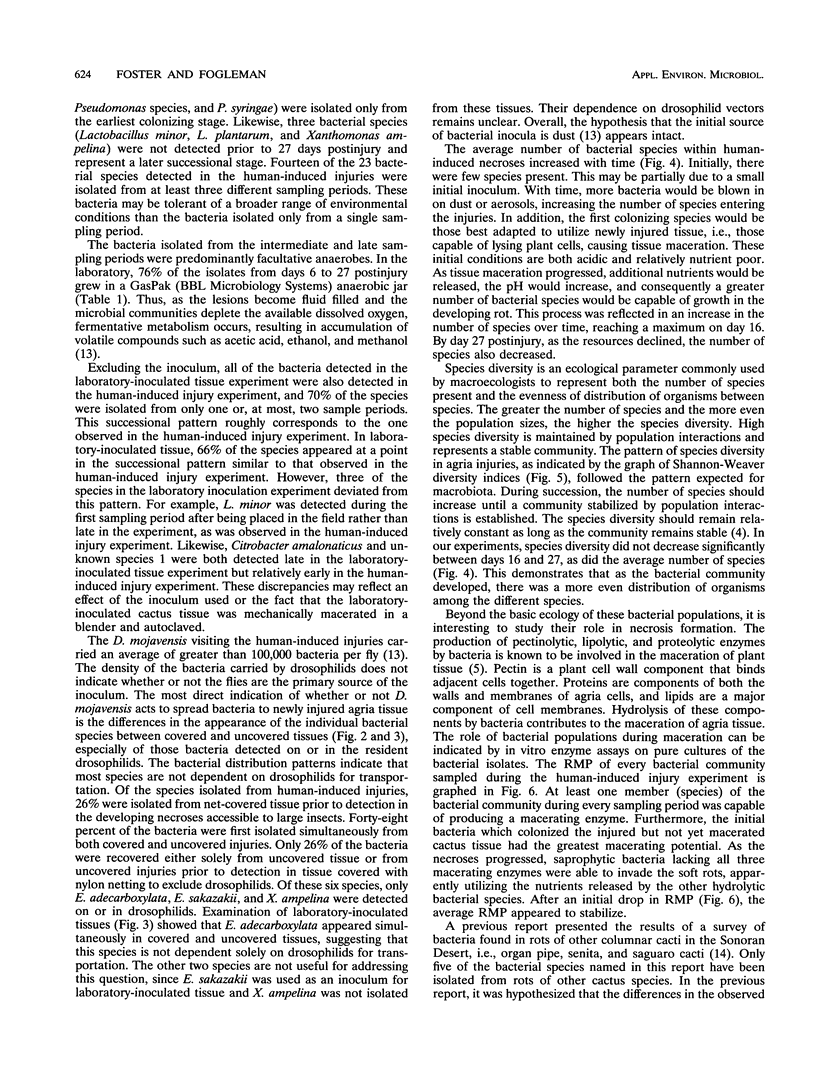
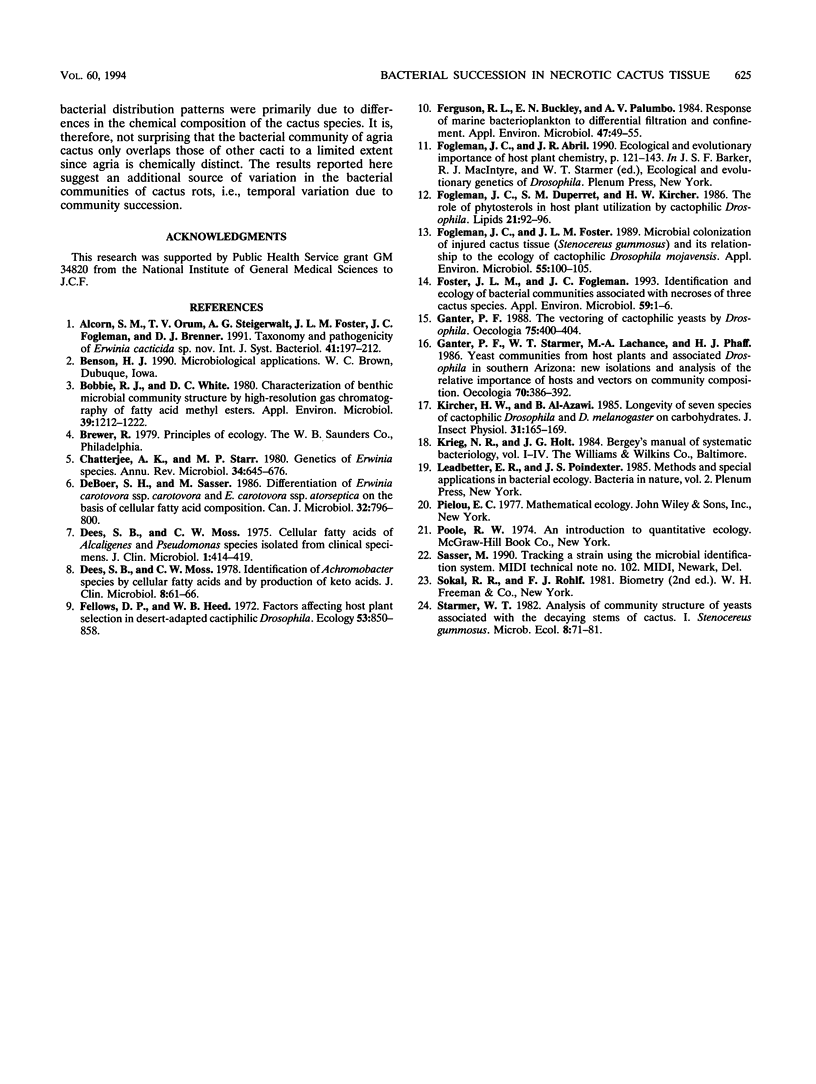
Selected References
These references are in PubMed. This may not be the complete list of references from this article.
- Alcorn S. M., Orum T. V., Steigerwalt A. G., Foster J. L., Fogleman J. C., Brenner D. J. Taxonomy and pathogenicity of Erwinia cacticida sp. nov. Int J Syst Bacteriol. 1991 Apr;41(2):197–212. doi: 10.1099/00207713-41-2-197. [DOI] [PubMed] [Google Scholar]
- Bobbie R. J., White D. C. Characterization of benthic microbial community structure by high-resolution gas chromatography of Fatty Acid methyl esters. Appl Environ Microbiol. 1980 Jun;39(6):1212–1222. doi: 10.1128/aem.39.6.1212-1222.1980. [DOI] [PMC free article] [PubMed] [Google Scholar]
- Chatterjee A. K., Starr M. P. Genetics of Erwinia species. Annu Rev Microbiol. 1980;34:645–676. doi: 10.1146/annurev.mi.34.100180.003241. [DOI] [PubMed] [Google Scholar]
- Dees S. B., Moss C. W. Cellular fatty acids of Alcaligenes and Pseudomonas species isolated from clinical specimens. J Clin Microbiol. 1975 May;1(5):414–419. doi: 10.1128/jcm.1.5.414-419.1975. [DOI] [PMC free article] [PubMed] [Google Scholar]
- Dees S. B., Moss C. W. Identification of Achromobacter species by cellular fatty acids and by production of keto acids. J Clin Microbiol. 1978 Jul;8(1):61–66. doi: 10.1128/jcm.8.1.61-66.1978. [DOI] [PMC free article] [PubMed] [Google Scholar]
- Ferguson R. L., Buckley E. N., Palumbo A. V. Response of marine bacterioplankton to differential filtration and confinement. Appl Environ Microbiol. 1984 Jan;47(1):49–55. doi: 10.1128/aem.47.1.49-55.1984. [DOI] [PMC free article] [PubMed] [Google Scholar]
- Fogleman J. C., Foster J. L. Microbial colonization of injured cactus tissue (Stenocereus gummosus) and its relationship to the ecology of cactophilic Drosophila mojavensis. Appl Environ Microbiol. 1989 Jan;55(1):100–105. doi: 10.1128/aem.55.1.100-105.1989. [DOI] [PMC free article] [PubMed] [Google Scholar]
- Foster J. L., Fogleman J. C. Identification and ecology of bacterial communities associated with necroses of three cactus species. Appl Environ Microbiol. 1993 Jan;59(1):1–6. doi: 10.1128/aem.59.1.1-6.1993. [DOI] [PMC free article] [PubMed] [Google Scholar]


